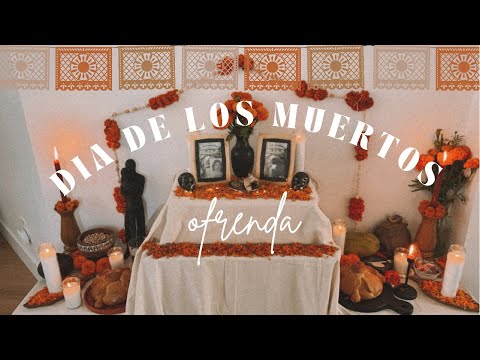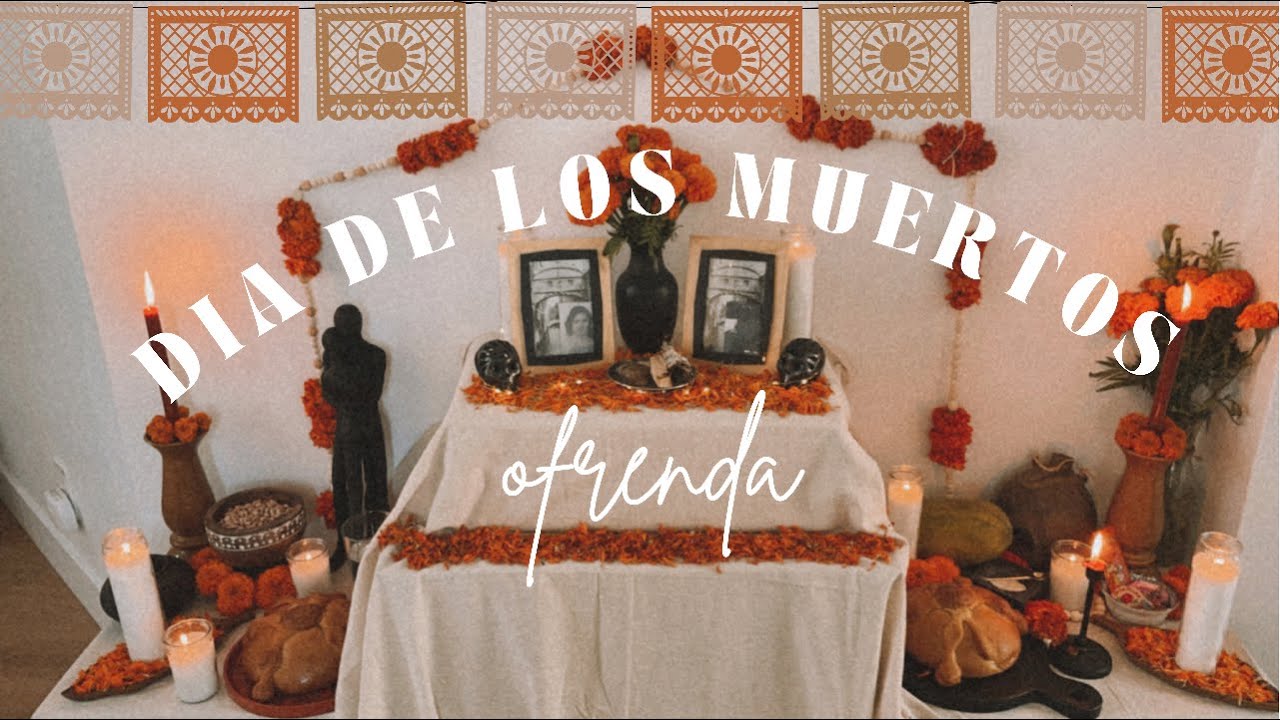Day of the Dead fabric is a vibrant and captivating textile that encapsulates the rich cultural heritage and significance of the ancient Mexican celebration. This intricately designed fabric showcases a mesmerizing tapestry of colorful skulls, ornate marigolds, and symbolic skeletons, all beautifully interwoven to tell a compelling story. Each thread, carefully chosen and skillfully crafted, represents a connection between the living and the deceased, serving as a visual tribute to honor and remember loved ones who have passed on.
This unique fabric not only serves as a feast for the eyes, but it also carries a deeper meaning. The bold hues and intricate patterns symbolize the celebration of life’s eternal cycle, reminding us to embrace the beauty and fleeting nature of our existence. From the intricate calaveras (skulls) that represent the whimsical nature of death to the vibrant cempasúchil (marigold) flowers that guide the souls back to their loved ones, every element within the fabric comes together to create a tapestry of remembrance, joy, and reverence.
Whether you are drawn to the exquisite craftsmanship, the vibrant colors, or the profound cultural significance, Day of the Dead fabric offers a captivating glimpse into a tradition that has been passed down through generations. Incorporating this beautiful fabric into your home decor, clothing, or artistic projects not only adds a touch of cultural appreciation but also serves as a powerful reminder of the interconnectedness of life and death. Immerse yourself in the enchanting world of Day of the Dead fabric and experience the rich tapestry of Mexican tradition come alive.

The Meaning and Significance of Day of the Dead Fabric
Day of the Dead, or Dia de los Muertos, is a vibrant and festive holiday celebrated in Mexico and other Latin American countries. It is a time for families to gather and honor their loved ones who have passed away. One of the most striking aspects of this holiday is the use of colorful fabric in various forms of decoration. In this article, we will explore the meaning and significance of Day of the Dead fabric.
The Traditional Patterns and Designs
Day of the Dead fabric is characterized by its intricate patterns and vibrant colors. Traditional designs often include images of skulls, skeletons, marigolds, and other symbols associated with the holiday. These patterns are carefully woven into the fabric using a combination of embroidery and textile printing techniques. Each design carries its own unique meaning and is meant to pay homage to the deceased.
Skulls and skeletons are prominent motifs in Day of the Dead fabric. They are not meant to be scary or morbid, but rather to represent the cycle of life and death. In Mexican culture, death is seen as a natural part of life, and this is reflected in the joyful and celebratory nature of the holiday. The intricate skull and skeleton designs on the fabric serve as a reminder that death is not something to be feared, but rather embraced as a continuation of existence.
Marigolds, or cempasúchil in Spanish, are another common element in Day of the Dead fabric. These bright orange flowers are believed to attract the souls of the deceased to their altars. Marigolds are known for their strong scent and vibrant color, which is why they are often used in Day of the Dead celebrations. The inclusion of marigold patterns in the fabric serves as a way to honor and welcome the spirits of the departed.
The Symbolism of Colors
Colors play a significant role in Day of the Dead fabric. Each color carries its own symbolism and meaning, adding depth and visual interest to the designs.
Black is a color often used in Day of the Dead fabric. It represents death and mourning, but it is also a symbol of the cycle of life. Black serves as a reminder that death is not the end, but rather a transition to a new phase of existence.
White is another important color in Day of the Dead fabric. It symbolizes purity and the spiritual journey of the departed souls. White is often used as a background color in the fabric, allowing the colorful patterns and designs to stand out.
Red is associated with the celebration of life and is commonly used in Day of the Dead fabric to represent passion, love, and vitality. It adds a vibrant and energetic element to the designs, reflecting the joyful nature of the holiday.
Uses of Day of the Dead Fabric
Day of the Dead fabric is used in a variety of ways during the holiday. It is not only used for decorative purposes but also has cultural and ceremonial significance.
Altar decorations are an essential part of Day of the Dead celebrations. Families create altars, or ofrendas, to honor their deceased loved ones. Day of the Dead fabric is often used to cover the altars and create a visually stunning display. The fabric is also used to make tablecloths, curtains, and other decorative elements for the altars.
Clothing and costumes are another popular use of Day of the Dead fabric. Many people choose to wear traditional clothing during the holiday, which often includes intricate embroidered designs and bright colors. Day of the Dead fabric is also used to create costumes for parades and other festive events.
Art and crafts are a significant part of Day of the Dead celebrations. Day of the Dead fabric is used in various art forms, such as tapestries, pillows, and wall hangings. It is also used in the creation of traditional crafts, such as papel picado (perforated paper) and calacas (skeleton figurines).
Preserving Tradition and Honoring the Departed
Day of the Dead fabric plays a crucial role in preserving the traditions and cultural heritage associated with the holiday. It is not just about the aesthetic appeal of the fabric but also about the deep symbolism and meaning behind each design and color.
By incorporating Day of the Dead fabric in their celebrations, families are able to honor their departed loved ones and keep their memory alive. It serves as a visual representation of the connection between the living and the dead, reminding us that death is not the end but a continuation of life in a different form.
In conclusion, Day of the Dead fabric is a beautiful and meaningful aspect of the holiday. Its intricate patterns, vibrant colors, and symbolic designs add depth and visual interest to the celebrations. Whether used in altar decorations, clothing, or crafts, Day of the Dead fabric serves as a powerful way to honor the departed and preserve the rich cultural traditions associated with this vibrant holiday.
Creating a Captivating Day of the Dead Altar: Unveiling Mexican Traditions and Halloween Fusion
Day of the Dead Fabric
Day of the Dead Fabric
The Day of the Dead, or Dia de los Muertos, is a vibrant and colorful celebration that takes place in Mexico and other Latin American countries. One of the most iconic elements of this tradition is the use of intricately designed fabrics, which play a significant role in the festivities. These fabrics are not only visually appealing but also carry deep cultural and symbolic meanings.
| Design | Description |
|---|---|
| Calavera | The calavera design is perhaps the most recognizable motif in Day of the Dead fabric. It features intricately adorned skulls, often adorned with flowers and vibrant patterns. These symbols represent the cycle of life and death, reminding us to embrace the fleeting nature of existence. |
| Marigold | The marigold, or cempasúchil, is a flower that holds great significance during the Day of the Dead. Its bright orange color is believed to guide the spirits of the deceased back to their loved ones. Fabrics adorned with marigold patterns symbolize the connection between the living and the dead, honoring the memory of those who have passed. |
| Papel Picado | Papel Picado, meaning “perforated paper,” is another popular design found in Day of the Dead fabrics. This intricate cut-paper technique is often replicated in fabric patterns, creating a delicate and festive appearance. Papel Picado represents the fragility of life and the way in which our time on Earth is beautifully temporary. |
| Catrina | The Catrina design pays homage to La Calavera Catrina, an iconic figure created by José Guadalupe Posada. This elegantly dressed skeleton woman represents the idea that death is an inevitable part of life, reminding us to embrace our mortality. Fabrics featuring the Catrina design often showcase her in elaborate attire, symbolizing the acceptance and celebration of death. |
Day of the Dead fabrics are not only used for clothing but also for decorations, such as tablecloths, banners, and altar coverings. They bring a festive and joyful atmosphere to the celebrations, while simultaneously honoring the memory of those who have passed.
Each design and pattern found in Day of the Dead fabric holds a significant cultural meaning, reflecting the rich traditions and beliefs of this vibrant celebration. These fabrics serve as a visual representation of the connection between life and death, encouraging us to celebrate and remember our loved ones who have departed.

